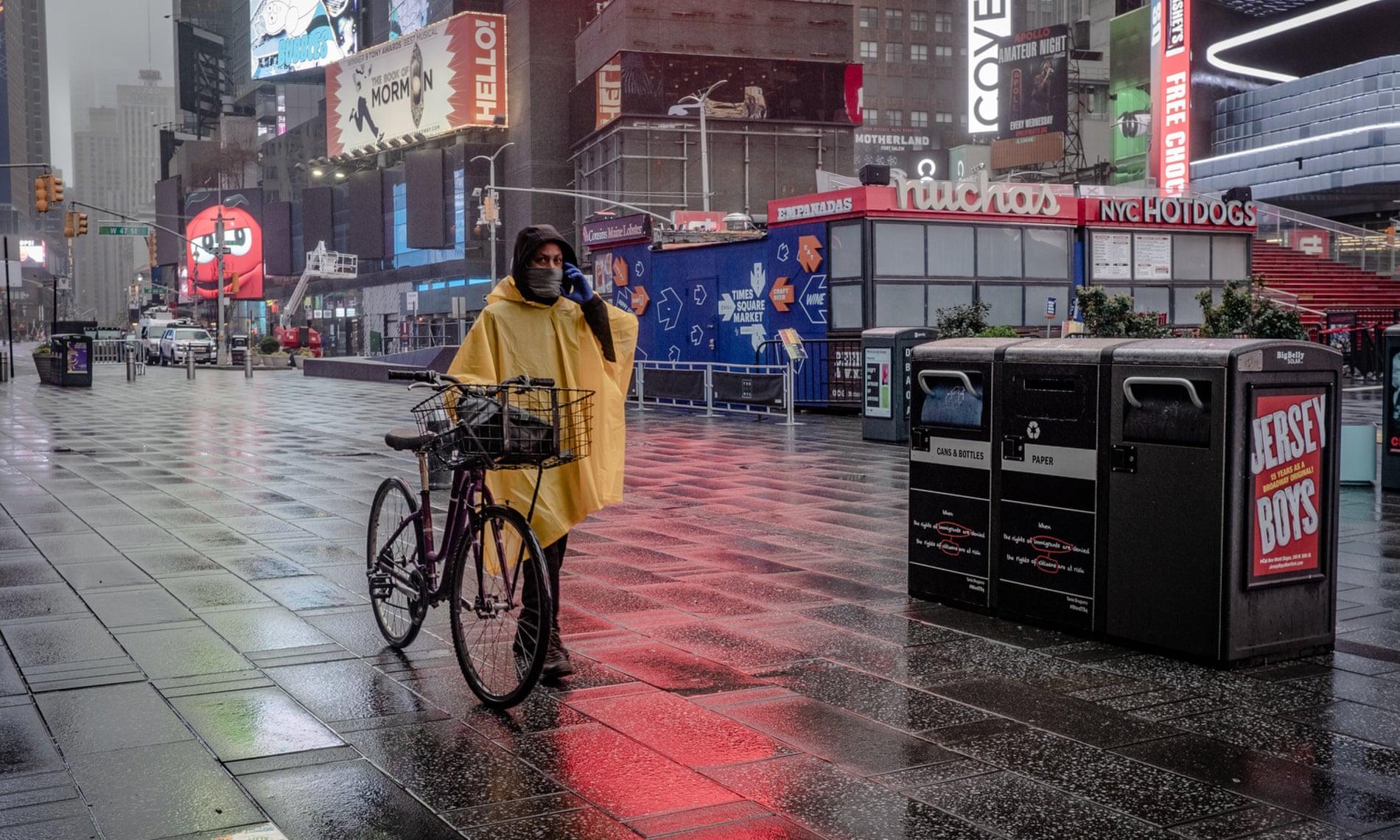As much as Trump's rural base hates America's cities and the "liberals" who live in them, cities - and generally the blue states in which they are located - have been the engines that have driven America's economy. Moreover, blue states have paid far more into the federal system than they receive, thereby subsidizing red states which often are viewed as unattractive venues for new and progressive businesses. Now, the coronavirus pandemic has hit cities with their denser populations especially hard and the economic impact may be long lasting, especially for those cities with the densest populations and most costly living costs. Service industries such as restaurants - some predictions are that 70% will never reopen - may be among those most severely harmed. Add to that the new working from home model which may change how large corporations with large numbers of white collar workers operate, and the impact may be magnified. A piece in Washington Post looks at the huge impact. Here are highlights:
Cities across the world have become sites of the novel coronavirus pandemic’s greatest tragedies. New York City is possibly now the single biggest hot spot of the virus and has suffered close to a quarter of all U.S. deaths. It’s a similar ratio in London when set against the rest of Britain. Madrid’s toll may be even worse.
In most cities, life is a shadow of what it once was, with streets empty, arenas abandoned, businesses shuttered. Well-heeled residents have skipped town to country abodes and seaside getaways. Most of those who remain have slipped into an atomized existence — their movements curtailed, their social circles exponentially shrunk — that’s anathema to the whole point of living in a bustling, vibrant city.
From the financial capitals of the West to teeming megacities in the developing world, the crisis is both exposing profound systemic problems and raising tough questions about whether cities will ever be able to return to what they once were.
The imperatives of social distancing have plunged the world into a giant experiment in remote work, and some office workers may never want to return to the stresses, steep housing costs and public health risks associated with life in a dense, big city. As Cavendish noted, trends already underway may accelerate: The populations of global cities like New York, Paris and even Shanghai were declining before the pandemic struck, largely as a result of soaring rent prices.
UNESCO, the U.N. cultural agency, warned Tuesday that the pandemic may kill 1 in 8 of the world’s museums. Myriad local retailers and businesses that in part help cities distinguish themselves from suburban areas more beholden to corporate chains face extinction. A recent survey in the United States found that 70 percent of smaller restaurants don’t expect to reopen should the coronavirus crisis last more than four months. Hundreds of American towns and cities plan on cutting public services in the coming year as tax revenue plummets.
With many companies probably downsizing their physical footprints and demand for commercial real estate slowing, the skyscrapers that shape skylines from Manhattan to Mumbai may start to look more like white elephants than symbols of financial might.
“If pandemics become the new normal, then tens of millions of urban service jobs will disappear,” wrote Edward Glaeser, an economics professor at Harvard University. “The only chance to prevent this labor market Armageddon is to invest billions of dollars intelligently in anti-pandemic health care infrastructure so that this terrible outbreak can remain a one-time aberration.”
Pandemics have inspired substantive innovation and change before. “In the 1850s, the cities of New York, Paris, and London rebuilt their sewage systems in response to a century-long global cholera pandemic that killed more than 1.5 million people and ushered in a new age of urban sanitation that spread across the globe,” wrote Steve LeVine in Medium’s Gen magazine.
Now the world’s cities may become crucibles for a new wave of experimentation. This may range from the benign — consider the many cities shutting down streets to car traffic and expanding public outdoor seating, pedestrian- and bicycle-only spaces — to the more sinister — consider the new technologies of surveillance and contact tracing that may come to dominate urban life even after the pandemic.
The crisis may provide a short window for our unaffordable, hypergentrified cities to reset and to reenergize their creative scenes,” wrote University of Toronto urbanist Richard Florida. “Predictions of the death of cities always follow shocks like this one. But urbanization has always been a greater force than infectious disease.”
If Trump remains in the White House and the GOP retains control of the U.S. Senate, do not expect the required investment in an anti-pandemic infrastructure. Voting in November for a straigh Democrat ticket has become all the more important.

No comments:
Post a Comment